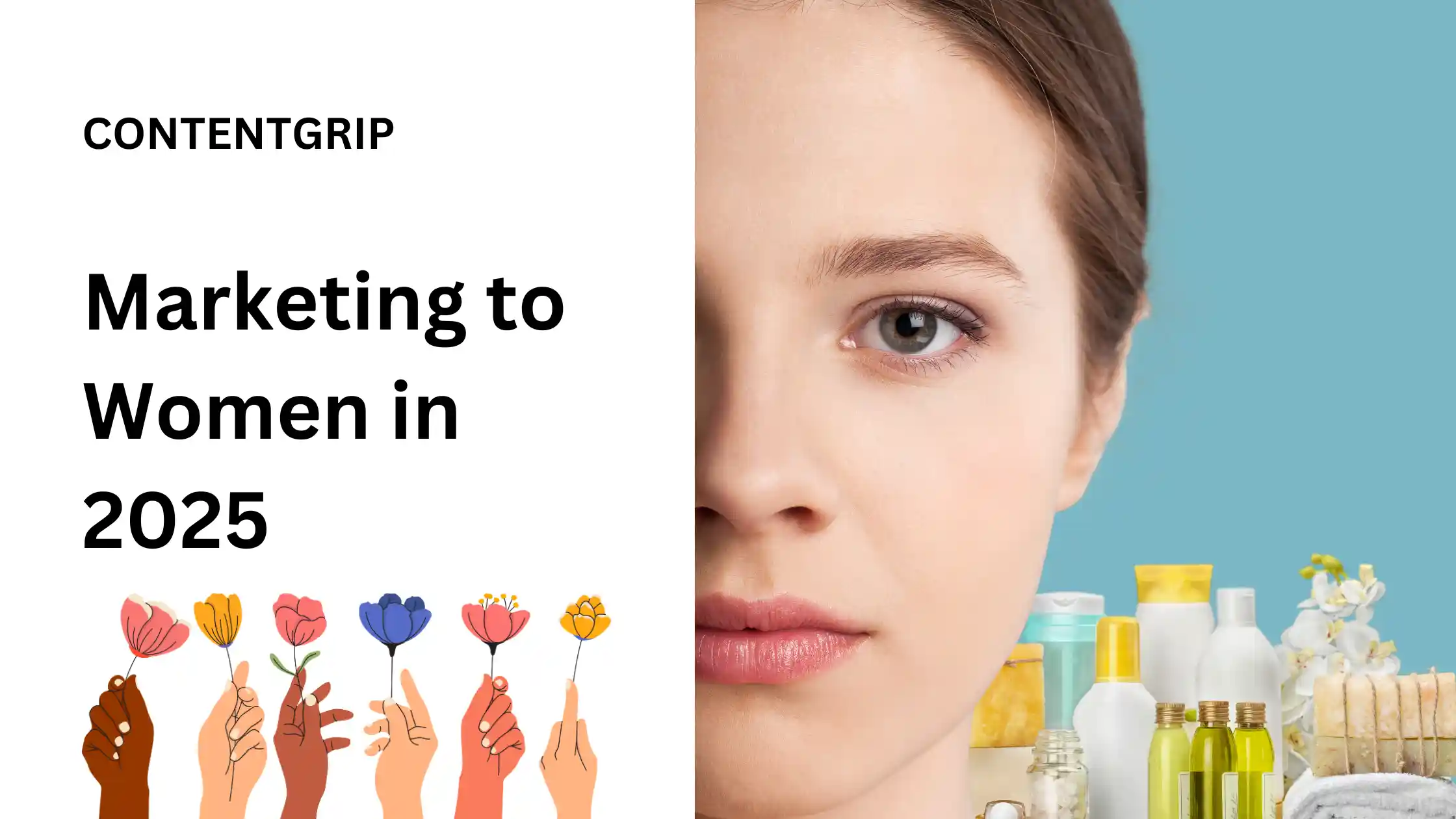Marketing to women in 2025
Marketing to women in 2025 requires more than just empowerment messaging. Learn how to avoid stereotypes and connect authentically with female consumers.

I've watched countless campaigns targeting women come and go. Some resonate deeply. Others make me cringe. And the data shows I'm not alone in this reaction.
Despite all our progress, there's still a significant disconnect between how brands think they're portraying women and how women actually feel about it. According to "AdReaction: Getting Gender Right" by Kantar¹, while 91% of marketers believe they portray women as positive role models in advertisements, a striking 45% of audiences think women are still being portrayed inappropriately.
This perception gap isn't just a minor miscommunication—it represents millions in wasted marketing dollars and missed opportunities to connect with one of the most powerful consumer segments. According to a 2024 report by NielsenIQ², women have a 70-80% influence on all consumer spending decisions, making them the primary economic force in most households.
This article examines the five critical mistakes marketers continue to make when targeting women in 2025, and offers actionable solutions based on current research and successful case studies.
Short on time?
Here's a table of contents for quick access:
- 5 critical mistakes in marketing to women
- 3 brands getting it right
- Looking forward: beyond gender marketing
5 critical mistakes in marketing to women
The disconnect between marketers' perceptions and women's realities isn't new, but it is persistent. This gap has remained stubbornly wide despite increased attention to gender issues in marketing. Below are common mistakes that happen:
1. Overusing stereotypes instead of data
The problem is painfully familiar: Pink equals feminine equals appealing to women.
This oversimplification continues to happen across industries, from financial services to technology. Most market segmentation still relies heavily on assumptions about women's roles, interests, or behaviors rather than actual data about their preferences and purchasing decisions.
Why this fails: It ignores the complexity of women's interests and values.
The fix: Replace assumptions with behavioral data, psychographics, and direct audience feedback using tools like Mixpanel³, Amplitude⁴ or Typeform⁵.
2. Focusing only on 'mom' or 'beauty' angles
Despite women's diverse interests and roles, many campaigns still default to portraying women primarily as caregivers or beauty-conscious consumers.
This narrow focus ignores vast segments of the female market: women in leadership positions (who control significant budgets), women in tech, gamers, engineers, solo travelers, sports enthusiasts, and many others who don't prioritize traditional feminine interests.
The fix: Expand messaging to reflect actual interests, not outdated personas. Consumer personas should be built on behavioral data and refined through ongoing research, not assumptions.
3. Using empowerment themes with no follow-through
The trend is everywhere: brands using words like "strong," "independent," and "unstoppable" in campaigns targeting women. But too often, the product, team, or corporate actions don't align with this messaging.
Women can quickly identify performative feminism in marketing. When a beauty brand launches an "empowerment" campaign but continues to use heavily retouched images or when a company celebrates women's leadership while maintaining an all-male executive team, the disconnect is obvious.
Risk: This inconsistency damages brand trust.
The fix: Ensure internal practices align with external messaging. This might mean:
- Reviewing product development processes for inclusivity
- Evaluating team diversity at all levels
- Auditing marketing assets for authentic representation
- Supporting causes that meaningfully impact women's lives
4. Forgetting intersectionality
Perhaps the most critical oversight in marketing to women is treating them as a single, homogeneous audience. Women's experiences are shaped by the intersection of gender with race, class, age, sexuality, disability, and cultural background.
Campaigns that ignore these intersections often miss the mark entirely. For example, beauty campaigns that focus exclusively on Western beauty standards consistently fail to resonate with diverse audiences across Southeast Asia, where beauty ideals vary significantly across countries and cultures.
The fix: Test and localize messages, and diversify the team behind them. Some tips you can do:
- Including women from diverse backgrounds in strategy development
- Testing messages across different demographic segments
- Adapting campaigns for cultural relevance in different markets
- Listening to feedback from community representatives
5. Underestimating women's purchasing influence
Despite controlling the majority of consumer spending, women remain underrepresented in product design, user testing, and financial product development.
This disconnect leads to products that don't fully meet women's needs or marketing that fails to address their actual priorities.
The fix: Bring women into the product development process—not just as end-users but as decision-makers.
3 brands that are getting it right
While many marketers struggle to effectively connect with women, some brands have created campaigns that genuinely resonate. Their success offers valuable lessons for brands looking to bridge the perception gap.
- Dove: Redefining beauty standards
Dove's "Real Beauty" campaign, initiated in 2004, aimed to challenge traditional beauty standards by featuring women of diverse shapes, sizes, and ethnicities. A notable component, the "Real Beauty Sketches" in 2013, highlighted the disparity between women's self-perceptions and how others see them, emphasizing the importance of self-esteem and body positivity.
What makes it work: The campaign wasn't just talk—it was backed by the Dove Self-Esteem Project, which has reached millions of young people with body confidence education. This long-term commitment to changing beauty standards, rather than just selling products, has built exceptional brand loyalty.
- Fenty Beauty: Representation revolution
Launched by Rihanna in 2017, Fenty Beauty changed the cosmetics industry by introducing an extensive range of foundation shades catering to all skin tones. This commitment to inclusivity addressed a significant gap in the market, earning widespread acclaim and setting new standards for diversity in beauty products.
What makes it work: Fenty didn't just talk about inclusion—they built their entire product line around it from day one. The 50-shade foundation range forced the entire industry to expand their offerings, demonstrating the market power of previously underserved communities.
- Always: Changing the conversation
Always' "#LikeAGirl" campaign, launched in 2014, sought to transform the negative connotation of the phrase "like a girl" into a positive affirmation. By showcasing young girls performing various activities with confidence and strength, the campaign aimed to empower women and challenge societal stereotypes.
What makes it work: The campaign addressed a deep-rooted linguistic bias and turned it into a movement for change. By focusing on confidence during puberty—a time when many girls experience a drop in self-esteem—Always connected their product directly to an authentic concern of their audience.
Looking forward: beyond gender marketing
As we move further into 2025, the most successful brands aren't just fixing these common mistakes—they're rethinking their entire approach to gender in marketing.
Today's consumers, especially younger demographics, increasingly reject rigid gender categorizations altogether. Brands that succeed are those that can balance acknowledging women's unique experiences while avoiding reductive stereotyping.
The future lies not in "marketing to women" as a separate strategy, but in developing inclusive marketing that speaks to people's actual needs, values, and priorities—regardless of gender.
The bottom line: Marketers have more data than ever about women's preferences and behaviors, yet some gendered mistakes haven't changed. Start by listening, expanding representation, and aligning your internal practices with your external messages.
Remember: Women don't want to be "spoken to"—they want to be part of the conversation.
Sources
- Kantar. (2019, January 29). AdReaction: Getting Gender Right. https://www.kantar.com/inspiration/advertising-media/adreaction-getting-gender-right
- Nielsen IQ. (2024, April 4). Shaping Success: A Deep Dive into Women’s Impact on the CPG Landscape. https://nielseniq.com/global/en/insights/analysis/2024/shaping-success-a-deep-dive-into-womens-impact-on-the-cpg-landscape/
- Mixpanel. (2025, April 3). Turn data into decisions. https://mixpanel.com/home/
- Amplitude. (2025, April 3). Chart Your Path to Growth with Digital Analytics. https://amplitude.com/
- Typeform. (2025, April 3). Get to know your customers with form worth filling out. https://www.typeform.com/
This post is created by ContentGrow, providing scalable and tailored content creation services for B2B brands and publishers worldwide. Book a discovery call to learn more.





